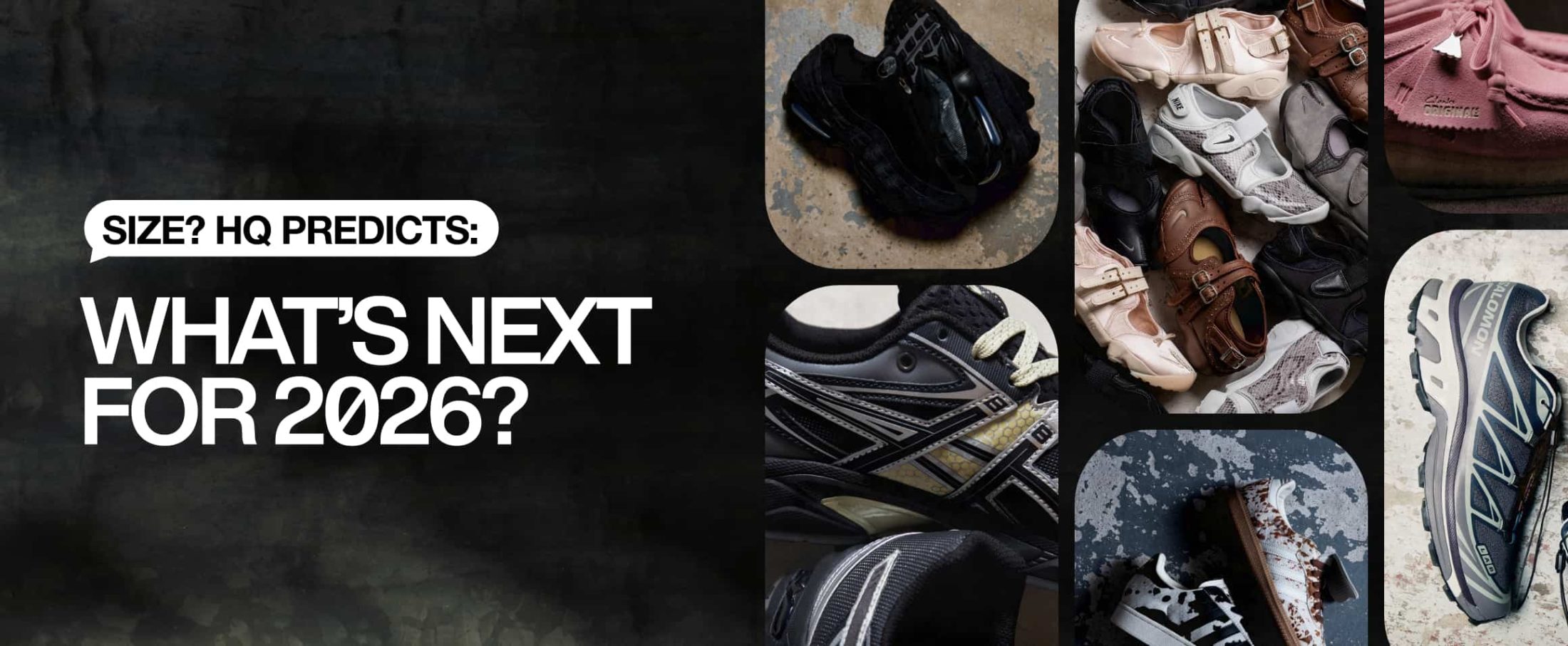The history of adidas FIFA World Cup match balls

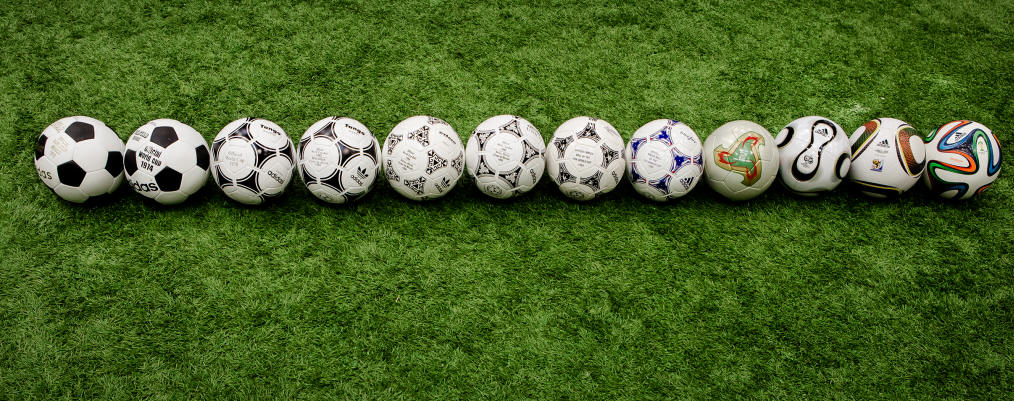
adidas started developing high-performance match balls in 1963, when most balls were heavy, brown and painful to kick. By the time FIFA had first commissioned adidas to provide the Official Match Ball for the 1970 FIFA World Cup in Mexico, the company had already become the world’s leading football brand. Tribalfootball.com have put together a comprehensive review of all the balls since then.
adidas Telstar – 1970 FIFA World Cup Mexico
Like all other balls in its time, the adidas Telstar was completely made of leather; however, unlike any other ball it featured 32 hand-stitched panels (12 black pentagons and 20 white hexagons), creating the roundest sphere of its time.
The revolutionary design of Telstar wrote football history: it was the first white football ever to be decorated with black pentagons. Mexico 1970 was the first live televised FIFA World Cup and the revolutionary design of Telstar – the name derives from “Star of Television” – made the ball far more visible on black and white television. Until this day, the adidas Telstar remains the archetype of all generic footballs.

adidas Telstar and adidas Chile – 1974 FIFA World Cup Germany
Two adidas match balls were used for Germany ‘74. Telstar made a repeat appearance with new black branding replacing the previously gold branding. And, building on the success of the adidas Telstar, adidas introduced a new all-white version named adidas Chile (after an all-white ball used at Chile 62). The materials and techniques used in the Telstar and Chile were identical to those used four years earlier.
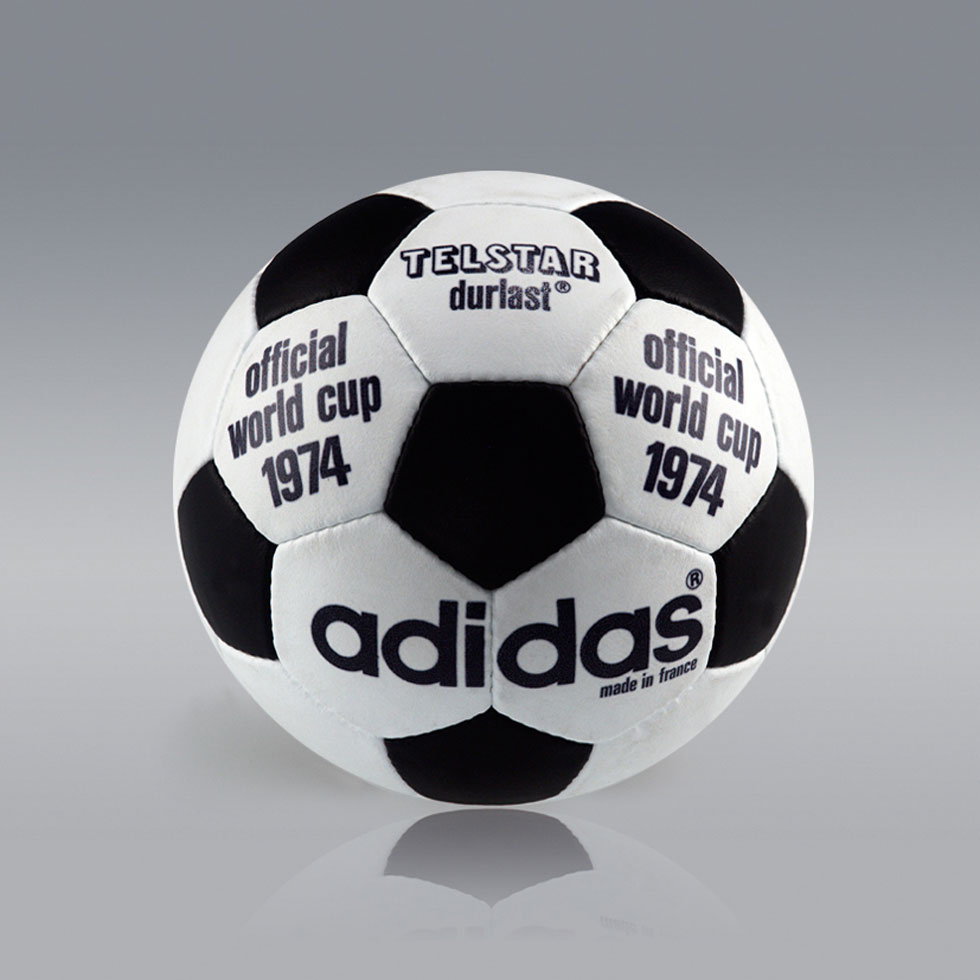
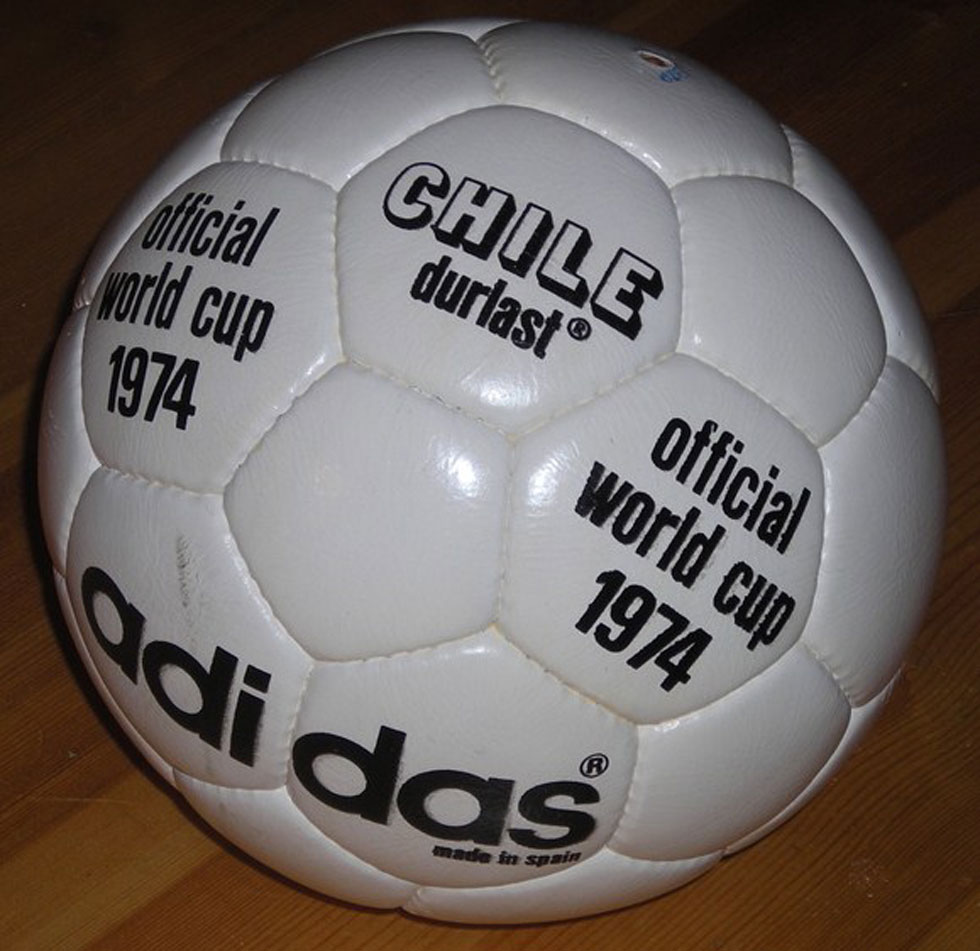
adidas Tango – 1978 FIFA World Cup Argentina
In 1978 football design experienced another revolution with the introduction of the adidas Tango. Once again adidas had created what would become a ‘football design classic’. Twenty panels with ‘triads’ created an optical impression of 12 identical circles. For the following five FIFA World Cup tournaments the Match Ball design was to be based on this design. Tango featured improved weather resistance qualities, and took its inspiration from the deep passion, emotion and elegance of Argentina.
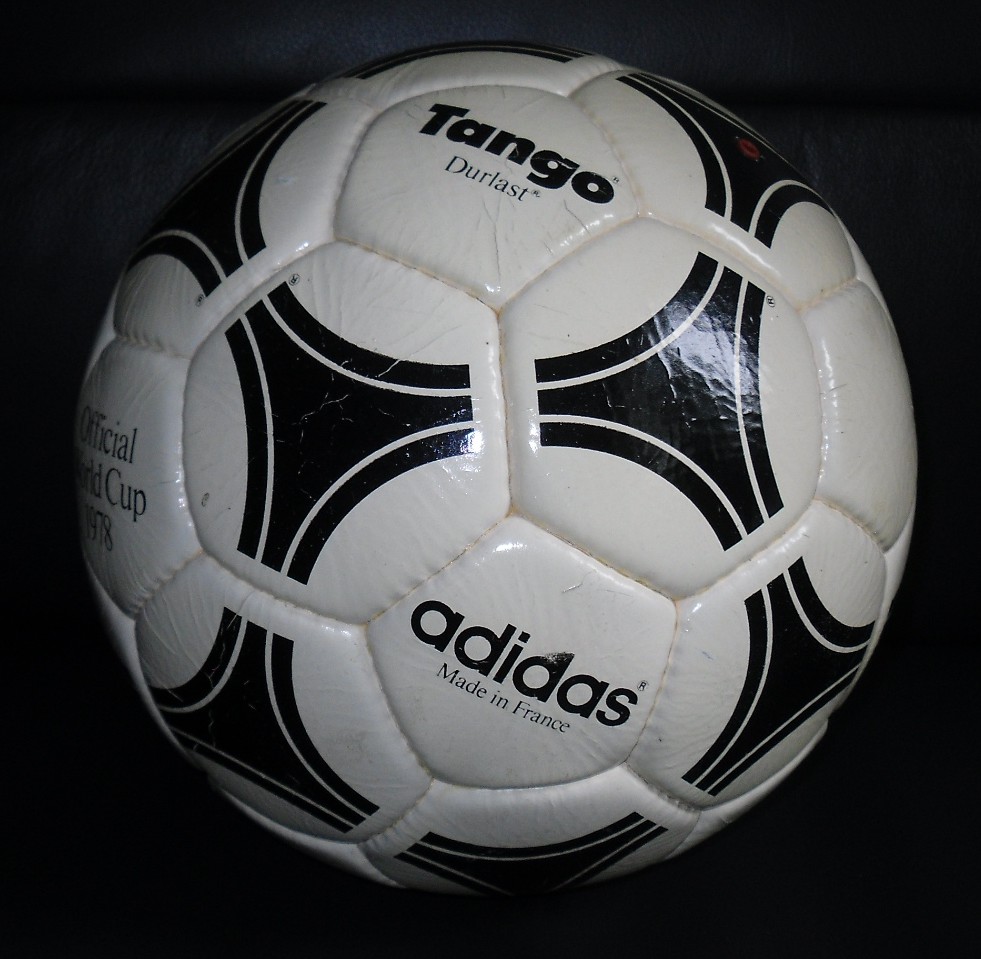
adidas Tango España – 1982 FIFA World Cup Spain
The initial Tango design from 1978 was only altered slightly in 1982. However, the Tango España did feature a major technological innovation. The Tango España, still made of leather, featured revolutionary waterproof sealed seams. This dramatically reduced the ball’s water absorption, thus minimizing weight increase during a game under wet conditions.
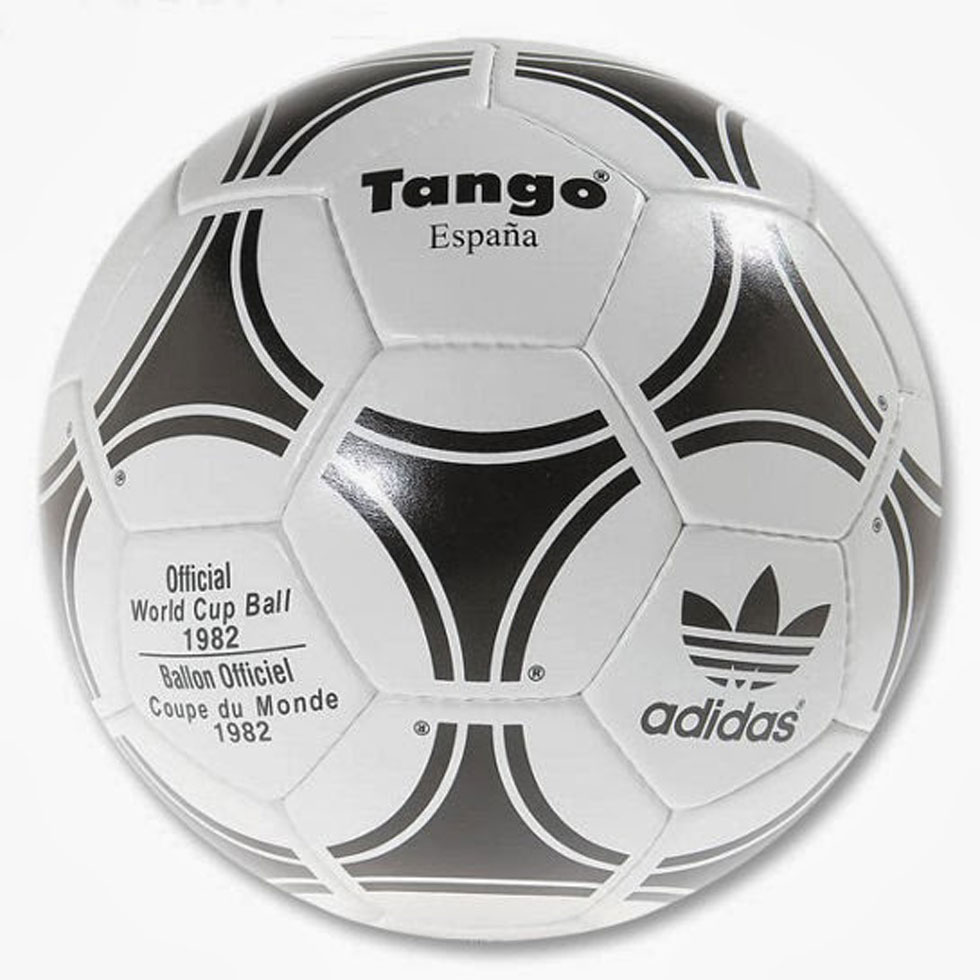
adidas Azteca – 1986 FIFA World Cup Mexico
The Match Ball for the 1986 FIFA World Cup revolutionised football production techniques. The adidas Azteca was the first ever synthetic FIFA World Cup Match Ball. The use of synthetic material increased its durability and further minimized water absorption. With its never-before-achieved performance on hard ground, at high altitude, and in wet conditions, Azteca represented a massive leap forward for the game.
Its elegantly and elaborately decorated design was inspired by the hosting nation’s native Aztec architecture and murals.
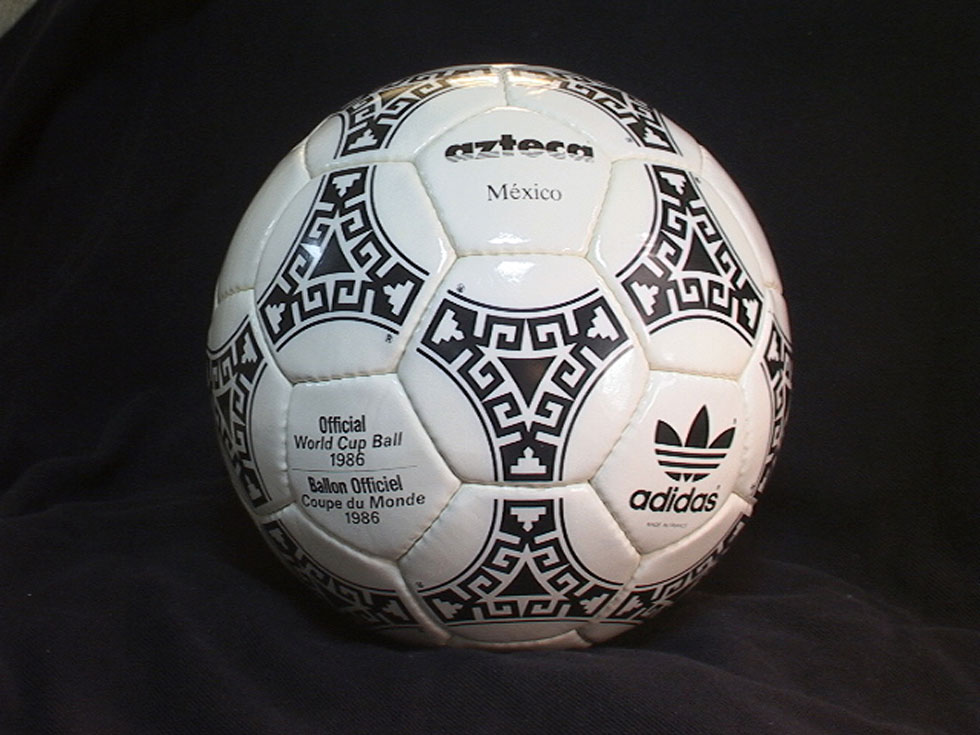
adidas Etrusco Unico – 1990 FIFA World Cup Italy
The adidas Etrusco Unico evolved the use of synthetic materials further, creating the first ever Match Ball containing an internal layer of black polyurethane foam, making Etrusco Unico fully water-resistant, more lively and faster than ever. The name and intricate design took their inspiration from Italy’s magnificent, ancient history and the contributions and fine art of the Etruscans. Three Etruscan lion heads decorate each of the 20 Tango triads.
adidas Questra – 1994 FIFA World Cup USA
In 1994 adidas introduced the first Match Ball featuring a high-tech, ultra-high-energy-return layer of white polyethylene foam. This PE layer made Questra softer to the touch (more controllable) and much faster off the foot for more speed. Inspired by space technology, high velocity rockets and America’s “quest for the stars”, Questra set new performance standards.
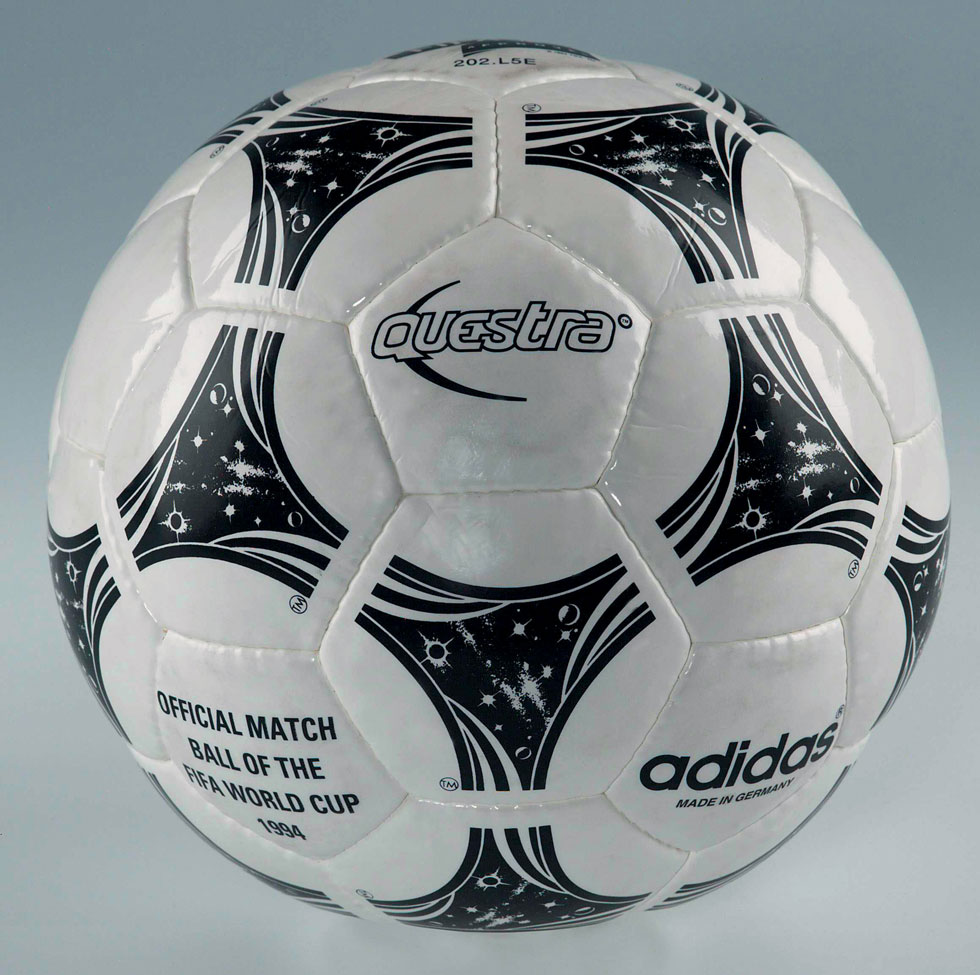
adidas Tricolore – 1998 FIFA World Cup France
adidas Tricolore was the first ever multi-colored Match Ball. France’s flag and national colors (the Tricolore) and the “cockerel” the traditional symbol of the French nation and Football Federation, inspired the ball’s name and design.
Moreover, the adidas Tricolore featured an advanced “syntactic foam” layer – a tight regular matrix, composed of gas-filled, individually closed and highly durable micro balloons. The syntactic foam further improved the ball’s durability, energy return and made it more responsive.

adidas Fevernova – 2002 FIFA World Cup Korea / Japan
The adidas Fevernova was the first World Cup Match Ball since 1978 to break with the traditional Tango design introduced in 1978. The colorful and revolutionary look and colour usage was entirely based on Asian culture. The Fevernova featured a refined syntactic foam layer to give the ball superior performance characteristics and a three-layer, knitted chassis, allowing for a more precise and predictable flight path every time.
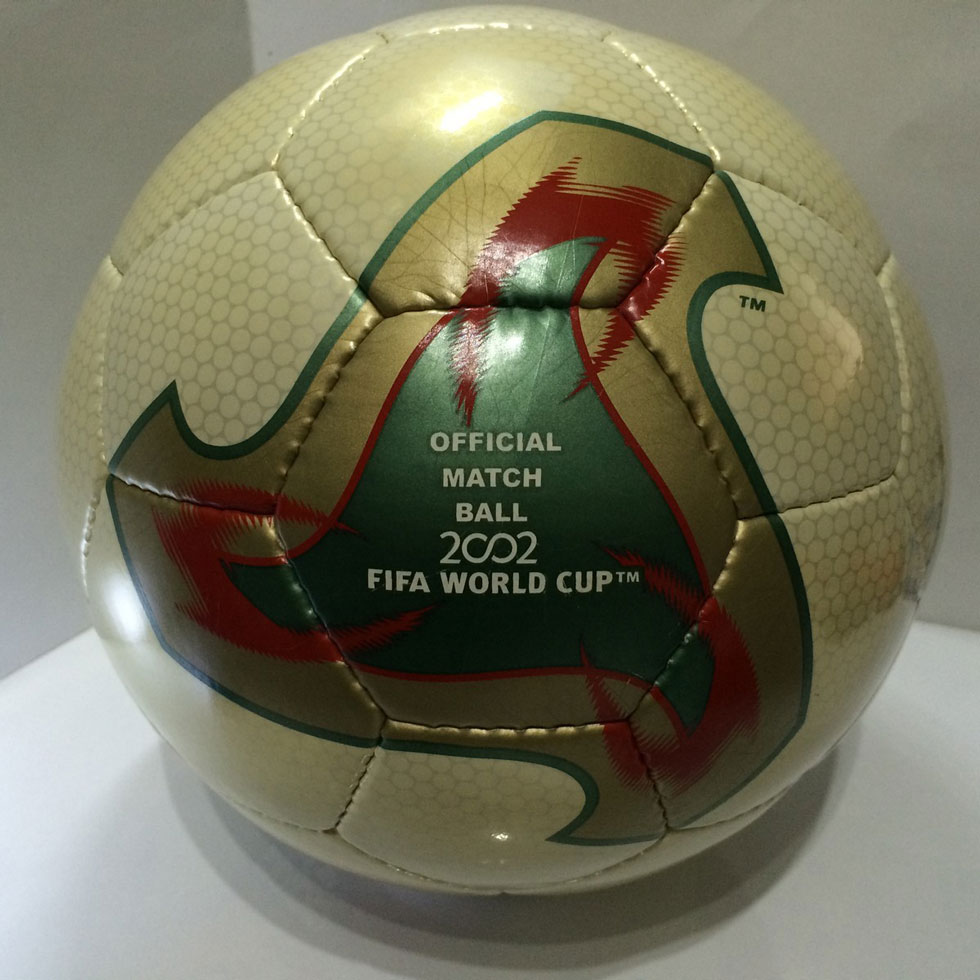
adidas +Teamgeist 2006 FIFA World Cup Germany
The adidas +Teamgeist introduced a radically new 14-panel configuration reducing the amount of three-panel touch points by 60% and the total length of the panel lines by over 15%, forming a smooth and perfectly round exterior allowing players significant improvements in accuracy and control. The Match Ball was designed in white and black, the traditional colours of the German national football team, and accentuated with the golden colour of the FIFA World Cup trophy. Its name, “+Teamgeist”, was based on the single most decisive characteristic every team needs to have in order to lift the trophy: team spirit.
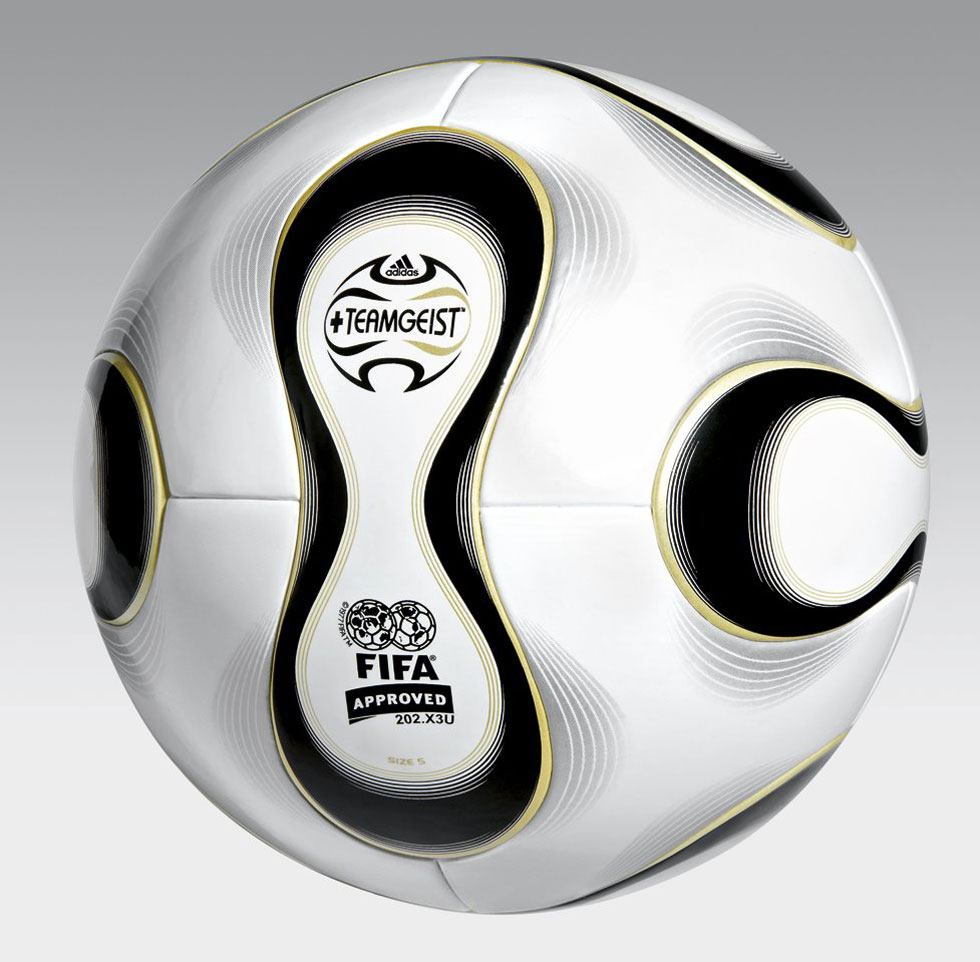
Adidas Jabulani 2010 FIFA World Cup South Africa
The Jabulani which means ‘to celebrate’ in isiZulu, features a South African inspired design and innovative new technology. The newly developed ‘Grip’n’Groove’ ball technology provided an exceptionally stable flight and perfect grip under all conditions. With only eight, thermally bonded 3-D panels, which were spherically molded for the first time, it made the ball perfectly round and more accurate than ever before.
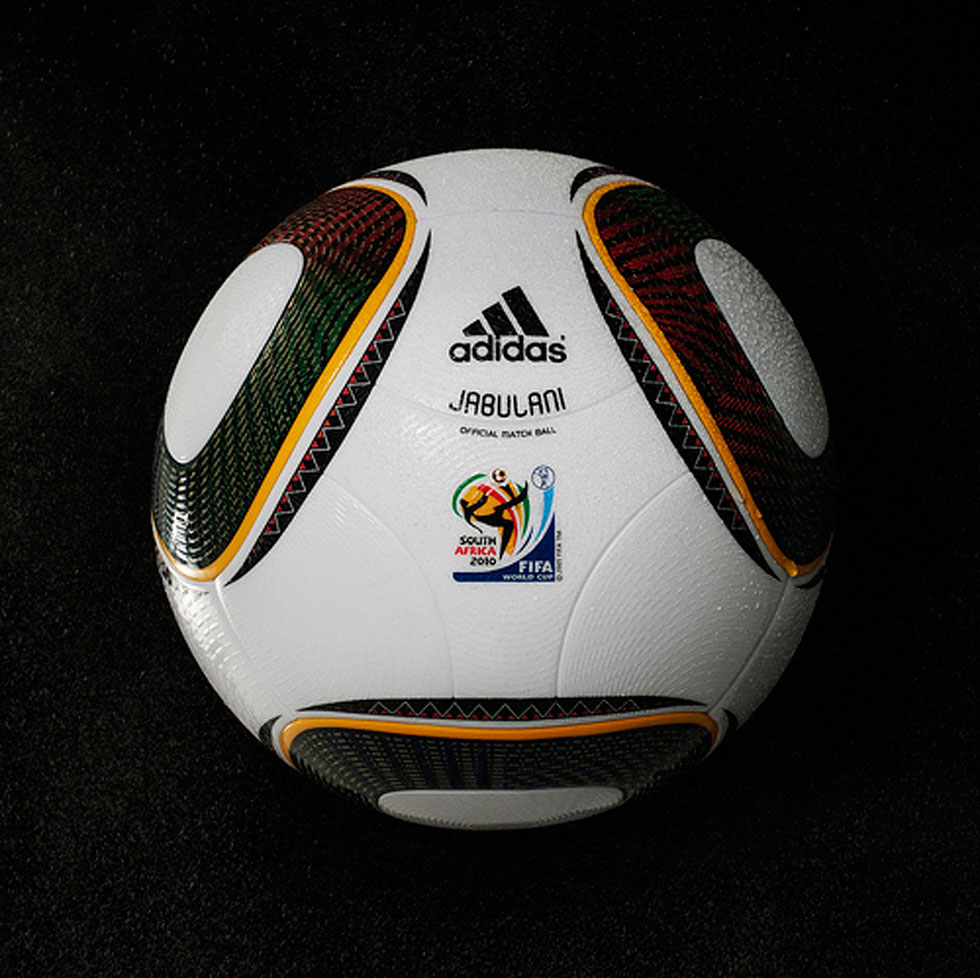
adidas Brazuca – 2014 FIFA World Cup Brazil
adidas has unveiled ‘brazuca’, the official match ball for the 2014 FIFA world cup in brazil. Two-and-half-years in the making, the ‘brazuca’ has undergone extensive testinginvolving 600 of the world’s top players and 30 teams in 10 countries across three continents, making it the most tested ball ever by adidas. The technology incorporated into the bladder and carcass of ‘brazuca’ is identical to the tango 12 used in the 2012 European Cup, with its ribbon panel design and colors symbolizing the traditional multicolored wish bracelets worn in Brazil. A new structural innovation provides a unique symmetry of six identical panels alongside a different surface texture which aims to enhance grip, touch, stability and aerodynamics on the pitch.
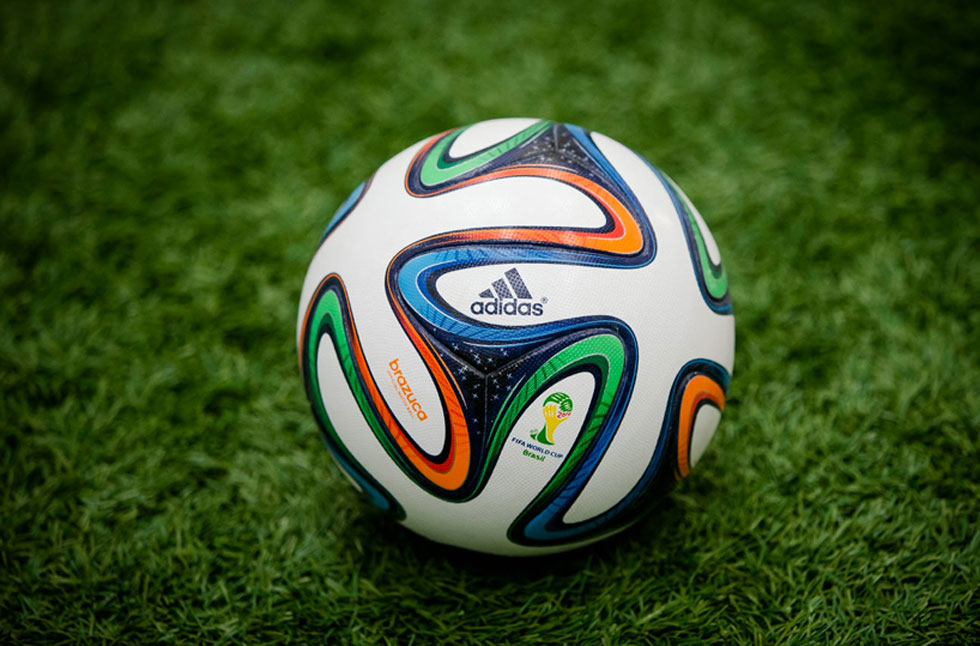
http://www.tribalfootball.com/articles/history-fifa-world-cup-match-balls-486521



